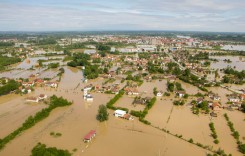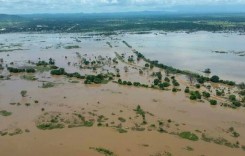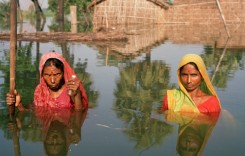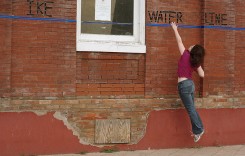Update, 16 November 2020:
On 09 November local media reported flooding from the White Nile river had prompted evacuations in Obongi District. Quoting local officials, media in Uganda reported that, as of 16 November more than 23,000 residents of Obongi District have been displaced from their homes as the sub-region experiences severe flooding caused by rising River Nile waters.
Uganda Red Cross reported on 11 November that flooding had affected Dzaipi Sub County in Adjumani, ading that “families have lost livelihoods (animals, Cassava plantations among others), household property, some huts are destroyed and are in urgent need of humanitarian support.”
Social Media
This is the current situation in West Nile region in the districts of Adjumani and Obongi floods have taken over roads, farm lands, animals, houses people have no where to go at the moment no food shelter etc but there’s no Media reporting the current… pic.twitter.com/5qtAMD0wV5
— Jazzman Nakatiff (@nakatiff) November 11, 2020
The disaster continues @GovUganda @ntvuganda @nbstv @observerug @933kfm @DailyMonitor #SaveUs #Floods Adjumani and Obongi needs your help and support. pic.twitter.com/wWKk4joOAA
— Jazzman Nakatiff (@nakatiff) November 11, 2020
Adjumani, Moyo and Obongi is in dire situation…Floods are killing their animals….displacing homesteads….We are quiet….@nyamadon @MorikuJoyce @KagutaMuseveni pic.twitter.com/NZY5UnoAI8
— Gazzaman Gaza Kodili (@Ggazzaman) November 11, 2020
Pictures taken in Dzaipi Sub County in Adjumani following heavy flooding. Families have lost livelihoods (animals, Cassava plantations among others), household property, some huts are destroyed and are in urgent need of humanitarian support @IFRC_DREF @ifrc @IFRCAfrica @eu_echo pic.twitter.com/eYswOETwqW
— Uganda Red Cross Soc (@UgandaRedCross) November 11, 2020
Original Report, 08 November 2020:
Heavy rain and stormy weather in western Uganda has caused flash flooding in Bundibugyo and further floods along the shores of Lake Albert.
Bundibugyo
In Bundibugyo, flash flooding came after heavy rain on 06 November caused a stream to break its banks in Ntotoro sub-county. Local media reports say around 1,000 people were affected, with homes and roads damaged.
Flash flooding struck in Bundibugyo in August this year, leaving 1 person dead and 800 homeless.
The flooding in Bundibugyo follows the recent flash floods in nearby Kasese District where 2 people died in late October 2020.
Lake Albert
Also in western Uganda, strong winds and heavy rain on 07 November caused further flooding along the shores of Lake Albert. Media reported that the “extended almost 1km outside its original boundary” flooding areas in Kikuube district, leaving homes damaged and crops destroyed.
Flooding from Lake Albert and Lake Kyoga has been ongoing for months. In August the government reported that rising water levels on Lake Albert and Lake Kyoga had displaced over 8,700 people in Buliisa, Nakasongola and Amolatar districts. Prime Minister Ruhakana Rugunda visited affected areas on 23 August 2020.
Uganda Red Cross reported that rising flood waters from Lake Albert displaced around 1,400 people in Kanara sub county, Ntoroko district in early October.

Social Media
“I have lost all my academic documents as a result of floods, and now I do not know where to begin from,” said John Batalingaya, a resident of Kirumya central in Bundibugyo district after the Friday morning downpour.
Details: https://t.co/6b0JhhE66u#VisionUpdates pic.twitter.com/bwiEnnEgvL— The New Vision (@newvisionwire) November 6, 2020








